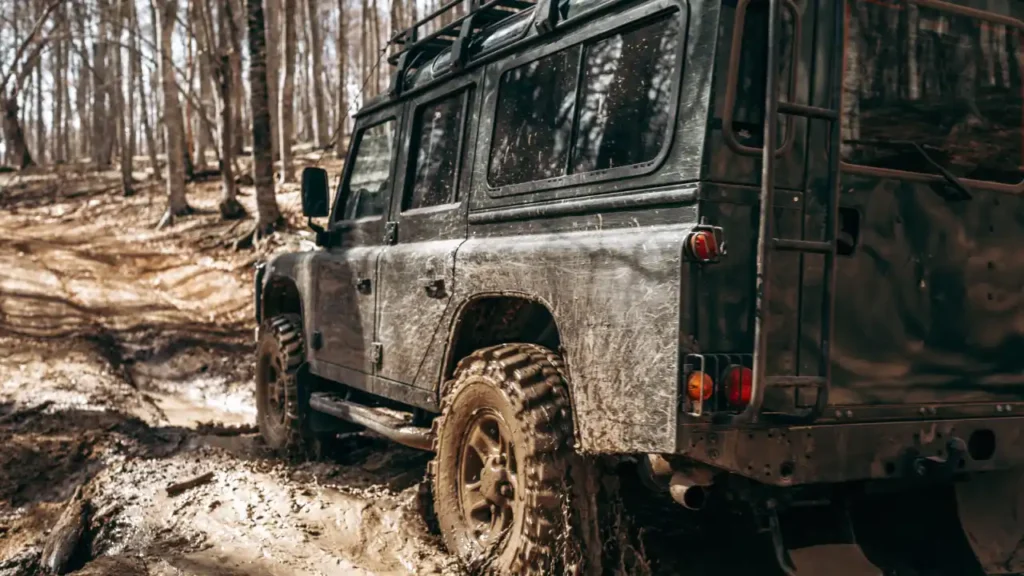
Free monthly entries to ALL giveaways
+1 every month
+5 every month
+10 every month
5%
125
150
350
100
100
50
Cancel membership anytime
Terms apply
apply

Written by
Admin
Published
August 20, 2024
Australia offers a myriad of landscapes perfect for off-road enthusiasts. Whether you’re tackling the rugged Outback, the sandy deserts of the Simpson, or the tropical tracks of Cape York, preparing your vehicle is crucial for a successful and safe adventure. This checklist ensures your vehicle is up to the task of Australia’s challenging and varied terrains.
Engine Health: Start with a comprehensive service. Check all fluid levels – oil, coolant, brake, transmission, and power steering. Replace any fluids that are dirty or low. Pay attention to the quality of air and fuel filters, as dusty conditions can clog them quickly.
Tyres: Ensure you’re equipped with good-quality all-terrain or mud-terrain tyres, depending on the terrain you plan to encounter most. Check for ample tread depth and no signs of damage or excessive wear. Remember to include a full-size spare tyre, or even two if you’re travelling remotely.
Suspension: Off-roading can be tough on suspension systems. A heavy-duty, off-road suspension kit is a worthwhile investment. It should be designed to handle extra weight, improve ground clearance, and provide a smoother ride on bumpy tracks.
Brakes: Inspect brake pads, rotors, and fluid. The brakes must be in top condition to handle long descents and sudden stops on unpredictable surfaces.
Battery: A dual battery system allows you to run accessories such as fridges and lights without draining the main battery. Ensure that all connections are secure, and terminals are free from corrosion.
Data from the Australian 4WD industry shows an increasing trend in the uptake of these upgrades, with a reported 10% rise in off-road suspension and heavy-duty tyre sales over the past year.
Recovery Gear: Australia’s challenging terrain necessitates a complete recovery kit. Include a shovel, snatch straps, winch, recovery points, and a ground anchor for sandy areas. According to a recent survey, 85% of Australian off-roaders have used recovery equipment during their trips.
Communications: Remote areas may lack mobile phone coverage. A satellite phone or HF radio can be a lifeline in emergencies. UHF radios are ideal for convoy communications and can assist in maintaining contact with nearby travellers or park rangers.
Navigation: Topographical maps and GPS units with off-road mapping are essential to prevent getting lost, significantly since over 50% of off-roading Aussies reported exploring new trails last year.
First-Aid Kit: Your first-aid kit should be comprehensive and include snake bite and burn treatments, reflecting the unique hazards of the Australian wilderness.
Legal Requirements: Ensure your vehicle modifications meet Australia’s legal standards. This can include rules about tyre size, lift height, and emissions. Roadworthy certificates might be required depending on your state or territory.
Environmentally Conscious Off-Roading: As per off-roading codes of conduct, minimize your impact on the environment by sticking to designated tracks and taking all waste with you.
Insurance: Off-road insurance policies have become more popular as Australians increasingly take to the trails. An off-road specific policy covers scenarios traditional insurance might not, ensuring you’re protected against the unique risks of off-roading.
In conclusion, preparing your vehicle for off-roading in Australia requires meticulous attention to detail and an understanding of the rugged conditions you’ll face. Using this detailed checklist, you can enhance your off-road experience, ensuring safety, reliability, and legal compliance. Let the adventure begin!